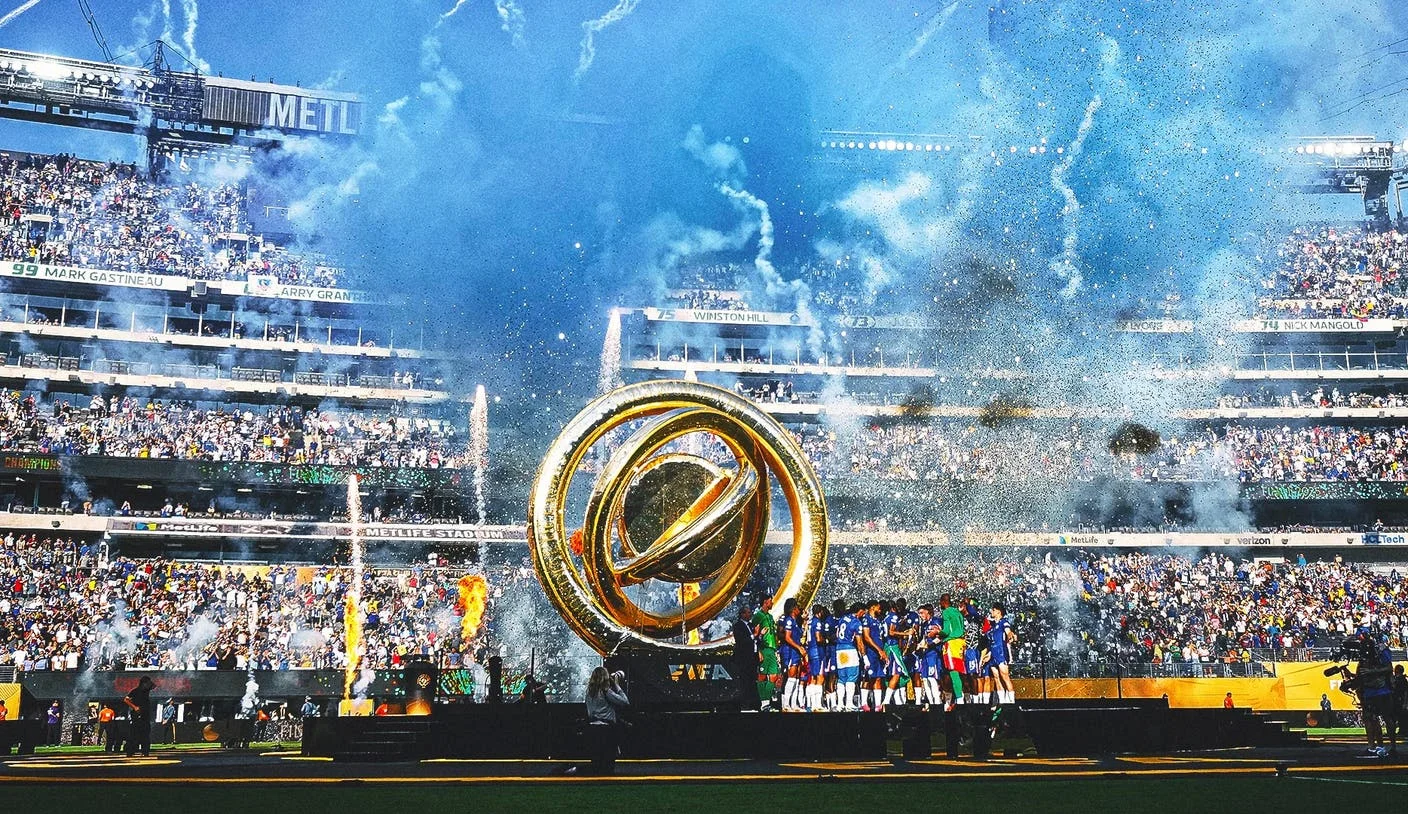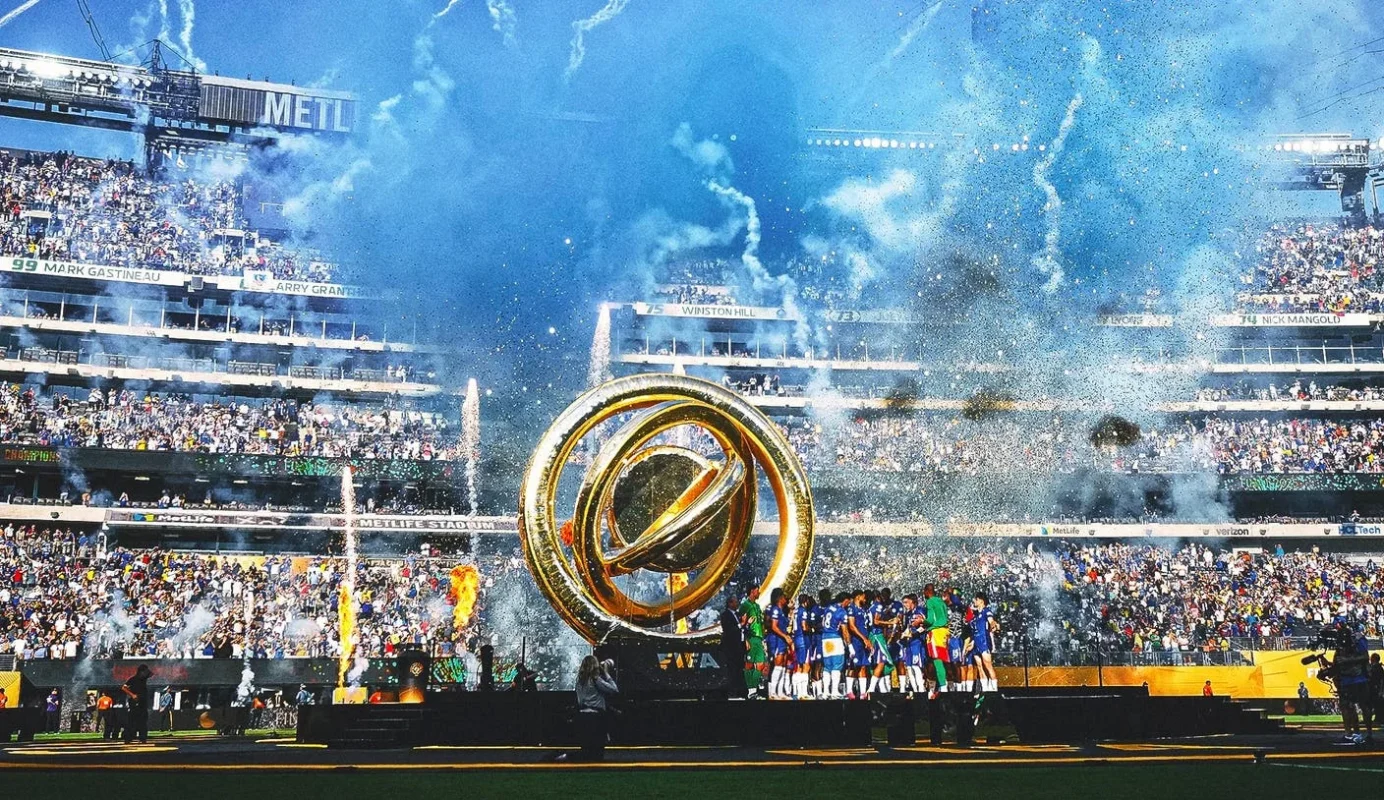
FIFA Club World Cup
The Final Before the Final: What the Club World Cup Told Us About 2026
Updated Jul. 15, 2025 12:40 p.m. ET
EAST RUTHERFORD, N.J. — Cutting through the noise of America’s biggest city can be tough, but one of soccer’s major summer events made a significant impact in the Big Apple. Passengers disembarked from flights at LaGuardia Airport wearing Chelsea and Paris Saint-Germain jerseys. Outside the chic midtown Manhattan hotels housing the FIFA Club World Cup finalists, fans clad in their team colors gathered on the sidewalks, eager to catch a glimpse of Cole Palmer or Ousmane Dembele.
At MetLife Stadium, just a few miles west of the Hudson River, three military helicopters flew overhead — one of which was carrying Donald Trump, marking the first time a sitting American president attended a major men’s international soccer final. This was a sneak peek of what’s in store for next year when the New York area, particularly suburban New Jersey, will crown the 2026 World Cup champion on the very same field.
From a cultural perspective, nothing compares to a World Cup final. Almost 1.5 billion people — over a sixth of the world’s population — tuned in to the thrilling 2022 finale between Lionel Messi’s Argentina and Kylian Mbappe’s France in Qatar. In contrast, the Super Bowl attracts a global TV audience of less than 200 million online casino login jili77.
Nonetheless, Sunday’s Club World Cup final felt like a major occasion in New York. It served as a fitting preview of what is set to happen on July 19 next year.
Despite some critics arising before and during the tournament, many of those criticisms held merit. Initial ticket prices were notably high, prompting FIFA to reduce them later. Several group stage matches encountered disappointingly low attendance, with one first-round match between South Korea’s Ulsan FC and South Africa’s Mamelodi Sundowns attracting just 3,412 spectators in the 25,000-seat home of MLS’s Orlando City. To accommodate European broadcasters, who preferred not to have matches during their late-night hours, games were scheduled during the blistering midday heat rather than U.S. evenings.
Still, the 63 matches spread over a month drew an average attendance of nearly 40,000 — an impressive figure comparable to several official World Cups held this century, such as South Korea/Japan 2002 (42,269), South Africa 2010 (49,690), and Russia 2018 (47,371). The knockout stage saw packed NFL stadiums in Atlanta, Miami, and Philadelphia. Notably, MetLife Stadium welcomed an average crowd of 75,000 for its one quarterfinal and two semifinal matches, culminating in a standing-room-only crowd of 81,118 for Sunday’s grand finale.
It was evident that the dominant majority in attendance on Sunday were Americans. While a handful of die-hard Chelsea and PSG fans flew in from London and Paris to see their teams lift the Tiffany-designed trophy, the English Premier League has been a regular feature on streaming services, cable, and free TV in the U.S. for decades. As one of the Premier League’s most successful clubs in the last 20 years — with five English titles, two European trophies, and two Europa League titles since 2005 — Chelsea has amassed a substantial following in the States.
Meanwhile, PSG stands out as one of the sport’s most glamorous teams, having featured global superstars like Messi, Mbappé, Neymar, David Beckham, and Zlatan Ibrahimovic, not to mention winning the Champions League for the first time in May.
The demographics of Sunday’s crowd were not just indicated by the accents heard in concessions lines. After Palmer secured a commanding 2-0 lead for Chelsea just half an hour into the championship, the Blues supporters broke into a thunderous “Let’s go Chelsea vipph.bet!” chant instead of the traditional songs usually heard at Stamford Bridge.
Many neutral fans were also present. Among the sea of blue and bleu-blanc-rouge were jerseys of all kinds, from vintage Maradona shirts to Liga MX’s Tigres, Toronto FC, and the Greek national team. A notable group sported Ecuador’s yellow jerseys or Chelsea shirts featuring Moises Caicedo’s name and number; New Jersey boasts a significant Ecuadorian community of around 250,000 residents, more than any other state.
Everyone came to witness something captivating and unique. FIFA embraced innovation during the event by experimenting with referee cameras and basketball-style player introductions. Legendary boxing announcer Michael Buffer introduced the teams with his electrifying “let’s get ready to rumble!” catchphrase. Crews hastily watered the grass during cooling breaks as if they were at an NBA game. Plus, there was a halftime show featuring J Balvin, Doja Cat, and Coldplay that felt entirely appropriate for a star-studded NFL matchup.
All these elements, however, did not overshadow the world-class competition on the field. Although U.S.-based soccer fans have experienced touring European giants every summer since the early 2000s, it’s relatively rare to see them engage in high-stakes matches on this side of the Atlantic.
Until this year, the Club World Cup had often been seen as a nuisance for top European teams. It began in 2000, was awkwardly fit into the middle of domestic seasons, and included merely seven participants. www.jili777.com However, since taking office in 2016, FIFA President Gianni Infantino has aimed to expand it as a global counterbalance to Europe’s prestigious UEFA Champions League. This ambition reached fruition this summer with a 32-team tournament hosted in the U.S jili888 login download., serving as a warm-up for next year’s 2026 co-hosted World Cup (with Canada and Mexico), which will feature 48 nations — 50% larger than any previous edition.
Given its newness, this Club World Cup and Sunday’s final, in particular, can be deemed a resounding success. So what if it might not measure up to the spectacle anticipated next year?
In addition to the prestige associated with being labelled the “undisputed” best club in the world by FIFA, Chelsea — which finished fourth in the English league last season — scored a cool $113 million in prize money at this Club World Cup, over half of what Liverpool earned for clinching the Premier League title after a challenging 10-month, 38-match season. Clubs and players clearly valued the competition, and it’s no wonder fans followed suit. 770 pub
“We value it just as much as winning the Champions League,” Chelsea manager Maresca commented after the match regarding the Club World Cup title. “It will be a source of pride to wear the winner’s badge.”
This past month has served as an enticing appetizer, but the main course is still on the way.
Doug McIntyre is a soccer reporter for FOX Sports who has covered the United States men’s and women’s national teams at FIFA World Cups across five continents. Follow him @ByDougMcIntyre.
What are your thoughts on this exciting event?

